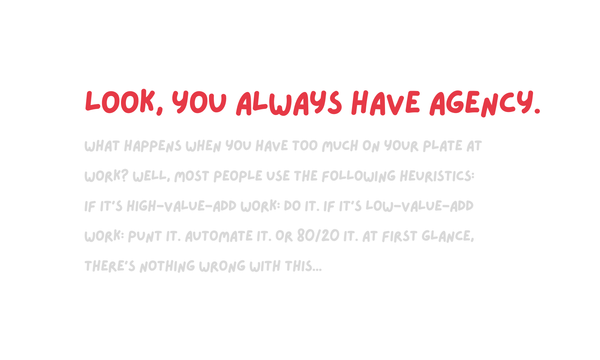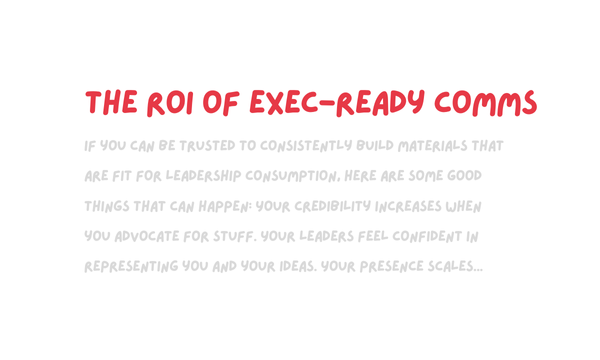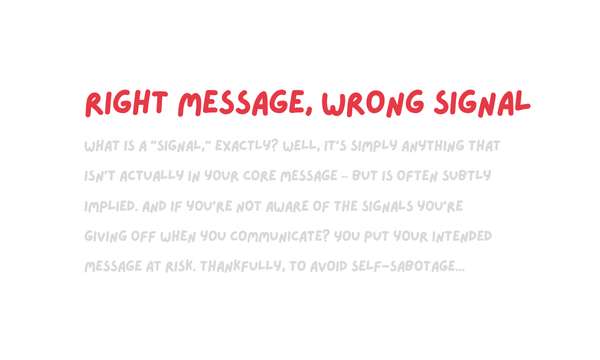“I’m so glad I get to read this long and exciting email...”

…said no one ever.
Here are some other things I think about when it comes to emails at work.
✅ Some people will never read your emails. Period. It’s not your fault. It’s not their fault either. People just have different buttons. So know your audience: either invest the time to write a kickass email, or find other more effective ways to engage.
✅ Keep emails short. Your audience should be able to read your email within 30 seconds. Use crisp bullet points (ideally no more than three); avoid long prose. Brevity also improves tone, which helps build executive presence.
(Of course, there are always exceptions. But in those cases, just call it out explicitly so your audience knows it’s the exception, not the norm.)
✅ If you cannot keep the email short: Ask yourself whether you should set up a live meeting instead. Or send a brief note to set context but save the discussion for the live meeting. It also helps to structure your email into sections, for example:
- Context: Travel budgets are being reduced; we need to deprioritize 2 out of 3 events for the rest of the year.
- Ask: Please take 3 minutes to read through the trade-off assessment here (link) and start formulating your view.
- Next Steps: I’ve set up time for us to discuss live this Thursday and make a decision collectively.
✅ If action is needed, put “Action Needed” in the subject line. Put the ask as the first sentence in your email. Even better, tell them if this is a 10-second / 1-minute / 5-minute ask.
✅ If action is NOT needed, put "No Action Needed" in your subject line. Trust me, there is nothing your recipients will appreciate more.
✅ Avoid email chains with too many recipients. Accountability diminishes as more names appear in the recipient list. If you intend to gather feedback from more than 3 people, invest the time to send them each an email separately instead. They’ll feel much more compelled to respond.
✅ For sensitive subjects or dividing issues: I’ve never seen someone influence others effectively by winning a debate through email. Remember: tone and trust are hard to convey through emails and pings, and emotions can escalate quickly. Meanwhile, people often forget to assume good intention. So when in doubt, be crisp with your email, but offer to talk in person to show goodwill.
✅ As a corollary to the above: as the recipient, always assume good intention when you can.
✅ Always assume that your emails can be forwarded. If there are statements you would rather someone not see (even if taken out of context) – assume there’s a non-zero chance they’ll see it eventually. Either rephrase, ping privately, or save it for live meetings where you can caveat or add nuance accordingly.


